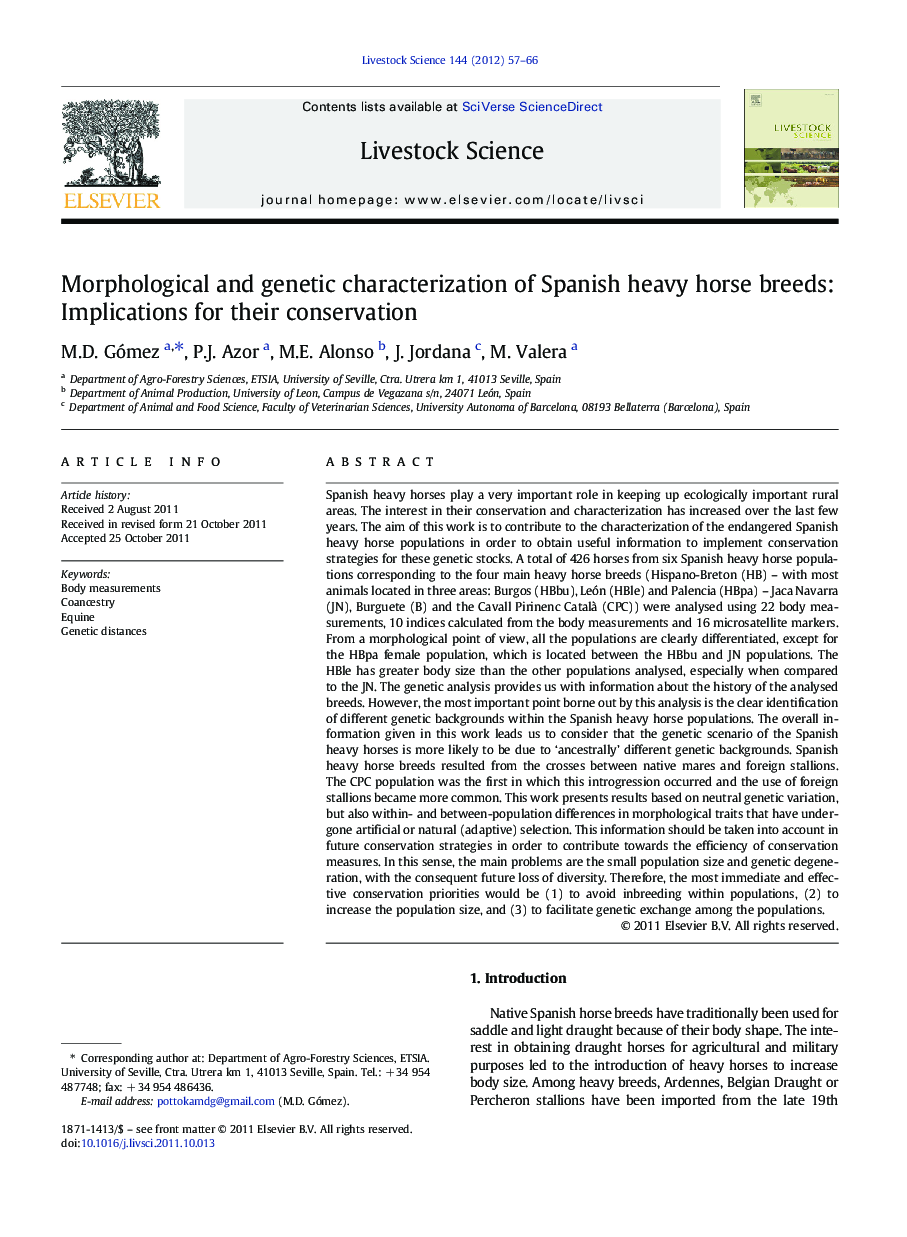| کد مقاله | کد نشریه | سال انتشار | مقاله انگلیسی | نسخه تمام متن |
|---|---|---|---|---|
| 5790925 | 1553988 | 2012 | 10 صفحه PDF | دانلود رایگان |
عنوان انگلیسی مقاله ISI
Morphological and genetic characterization of Spanish heavy horse breeds: Implications for their conservation
دانلود مقاله + سفارش ترجمه
دانلود مقاله ISI انگلیسی
رایگان برای ایرانیان
کلمات کلیدی
موضوعات مرتبط
علوم زیستی و بیوفناوری
علوم کشاورزی و بیولوژیک
علوم دامی و جانورشناسی
پیش نمایش صفحه اول مقاله

چکیده انگلیسی
Spanish heavy horses play a very important role in keeping up ecologically important rural areas. The interest in their conservation and characterization has increased over the last few years. The aim of this work is to contribute to the characterization of the endangered Spanish heavy horse populations in order to obtain useful information to implement conservation strategies for these genetic stocks. A total of 426 horses from six Spanish heavy horse populations corresponding to the four main heavy horse breeds (Hispano-Breton (HB) - with most animals located in three areas: Burgos (HBbu), León (HBle) and Palencia (HBpa) - Jaca Navarra (JN), Burguete (B) and the Cavall Pirinenc Català (CPC)) were analysed using 22 body measurements, 10 indices calculated from the body measurements and 16 microsatellite markers. From a morphological point of view, all the populations are clearly differentiated, except for the HBpa female population, which is located between the HBbu and JN populations. The HBle has greater body size than the other populations analysed, especially when compared to the JN. The genetic analysis provides us with information about the history of the analysed breeds. However, the most important point borne out by this analysis is the clear identification of different genetic backgrounds within the Spanish heavy horse populations. The overall information given in this work leads us to consider that the genetic scenario of the Spanish heavy horses is more likely to be due to 'ancestrally' different genetic backgrounds. Spanish heavy horse breeds resulted from the crosses between native mares and foreign stallions. The CPC population was the first in which this introgression occurred and the use of foreign stallions became more common. This work presents results based on neutral genetic variation, but also within- and between-population differences in morphological traits that have undergone artificial or natural (adaptive) selection. This information should be taken into account in future conservation strategies in order to contribute towards the efficiency of conservation measures. In this sense, the main problems are the small population size and genetic degeneration, with the consequent future loss of diversity. Therefore, the most immediate and effective conservation priorities would be (1) to avoid inbreeding within populations, (2) to increase the population size, and (3) to facilitate genetic exchange among the populations.
ناشر
Database: Elsevier - ScienceDirect (ساینس دایرکت)
Journal: Livestock Science - Volume 144, Issues 1â2, March 2012, Pages 57-66
Journal: Livestock Science - Volume 144, Issues 1â2, March 2012, Pages 57-66
نویسندگان
M.D. Gómez, P.J. Azor, M.E. Alonso, J. Jordana, M. Valera,